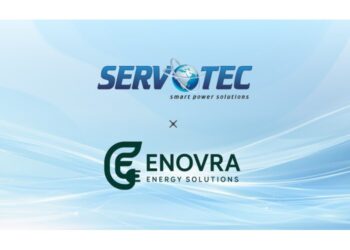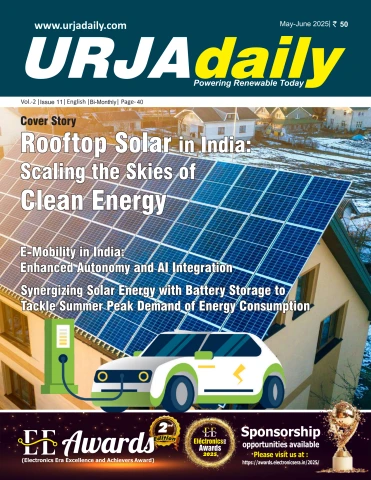Introduction: From Niche Chemistry to Mainstream Workhorse
Lithium manganese iron phosphate LMFP or Li(Mn)FePO₄ is stepping into the spotlight. By blending manganese into the classic LFP cathode, LMFP pushes energy density higher while preserving LFP’s celebrated strengths: thermal stability, long cycle life, safety, and low-cost materials.
As governments chase net-zero roadmaps and OEMs de-risk supply chains, LMFP is emerging as a pivotal chemistry across passenger and commercial EVs, stationary energy storage systems (ESS), and portable power. Forecasts point to hundreds of millions in new revenue through 2034, powered by cost advantages (iron & manganese vs. cobalt & nickel), policy tailwinds, and relentless R&D.
What Exactly Is LMFP?
LMFP modifies the iron-phosphate cathode with manganese to raise Wh/kg, making it competitive with nickel-rich chemistries for range while keeping LFP-like safety. It’s produced in cylindrical, prismatic, and pouch formats and spans the full value chain—from cell manufacturing to module/pack integration, BMS, recycling, and second-life. In short: more energy than LFP, safer and cheaper than many NMC variants.
Market Highlights at a Glance
- Leading Region: Asia-Pacific
- Fastest Adopters: Europe & North America
- Chemistry Variant (2025): Standard LFP dominates; LMFP variants grow fastest
- Cell Form: Prismatic & pouch lead; cylindrical grows fastest
- Energy Class: Standard density leads; enhanced/high-performance LMFP grows fastest
- Applications: Stationary ESS & passenger EVs dominate; passenger BEVs & commercial fleets on LMFP grow fastest
- Voltage: Mid-voltage packs dominate; high-voltage LMFP grows fastest
- Formulation: CAM-sourced LMFP powders dominate; coated LMFP grows fastest
- Module/Pack: Pack-level integrated solutions dominate; module-level & turnkey ESS grow fastest
- Charging Profile: High-energy / long-cycle dominate; high-power LMFP grows fastest
- End-User: Automotive OEMs & Tier-1s dominate; utilities & fleet electrification buyers grow fastest
- Sales Channel: Direct OEM & long-term contracts dominate; EPC / project-based ESS procurement grows fastest
- Top Players: CATL, BYD, LG Energy Solution, Samsung SDI, Panasonic Energy, CALB, EVE Energy, Gotion High-tech, SVOLT, Sunwoda, A123 Systems
Why LMFP, Why Now?
Cost & Materials
Iron and manganese are abundant and inexpensive versus cobalt/nickel, de-risking supply chains and lowering pack $/kWh.
Safety & Stability
LMFP maintains LFP’s thermal stability and safety profile—critical for mass-market EVs, fleets, buses, and dense urban ESS.
Energy Density
Manganese boosts energy density over LFP, enabling longer range and more compact ESS footprints without jumping to nickel-rich risk profiles.
Policy Alignment
Clean-energy incentives, local-content rules, and grid-storage mandates create durable demand for safe, cost-effective chemistries.
R&D Flywheel
Rising CAPEX in materials, coatings, and BMS is translating into better life, performance, and manufacturability—accelerating adoption.
2025 Trendline: How the Market Is Moving
Business Expansion: Players scale upstream and midstream capacity (e.g., new demonstration plants) to secure CAM supplies and de-bottleneck growth.
Product Launches: New LMFP cells target higher voltage, faster charge, improved safety—especially for EV platforms.
Partnerships: Strategic tie-ups between manganese suppliers, cathode producers, cell makers, and integrators lock in purity, volumes, and joint development.
Deep Dives by Segment
1) Chemistry Variant
- Standard LFP (Leader): Entrenched supply chains, proven safety, low cost—dominant across entry EVs and ESS.
- LMFP (Fastest Growth): A sweet spot for range + safety + cost; automakers and cell makers scale LMFP for mid-range EVs and compact ESS.
2) Cell Form Factor
- Prismatic & Pouch (Leader): High packaging density, flexible integration, and platform reuse across vehicle models and ESS racks.
- Cylindrical (Fastest Growth): Manufacturing scale, standardization, and thermal behavior favor rapid expansion—especially for high-volume lines.
3) Energy Density Class
- Standard Density (Leader): Mature lines, lowest cost structure; ideal for buses, entry EVs, large ESS.
- Enhanced/High-Performance LMFP (Fastest Growth): Better Wh/kg with safety intact—closing the gap to nickel chemistries for mainstream EV range.
4) Applications
- Dominant: Stationary ESS & passenger EVs—the two largest installed bases and capex magnets.
- Fastest Growth: Passenger BEVs & commercial fleets on LMFP—fleets value TCO, safety, and uptime; consumers want range without price spikes.
5) Voltage / Pack Architecture
- Mid-Voltage (Leader): 48–400 V packs fit today’s platforms; proven safety and ecosystem readiness.
- High-Voltage LMFP (Fastest Growth): Next-gen EV platforms chase ultrafast charging + range with LMFP’s safer, cheaper bill of materials.
6) Formulation / Manufacturing
- CAM-Sourced LMFP Powders (Leader): Original, scalable route with traceability and robust process control.
- Coated LMFP (Fastest Growth): Particle coatings improve conductivity, stability, and cycle life, lifting performance without runaway costs.
7) Module & Pack Integration
- Pack-Level Integrated (Leader): Turnkey packs with thermal/BMS/safety deliver speed-to-market and certification advantages.
- Module-Level & Turnkey ESS (Fastest Growth): Utilities and C&I customers want drop-in, rapidly deployable building blocks; second-life modules add value.
8) Charging Profile
- High-Energy / Long-Cycle (Leader): Serves both EV range and multi-year ESS duty cycles with strong TCO.
- High-Power LMFP (Fastest Growth): Built for fast charging and high C-rates—key to mainstream EV adoption and fleet turnaround times.
9) End-User
- Automotive OEMs & Tier-1s (Leader): Volume contracts, co-development, and platform lock-ins anchor demand.
- Energy Utilities & Fleet Buyers (Fastest Growth): Grid stability needs and fleet decarbonization agendas drive rapid LMFP uptake.
10) Sales Channel
- Direct OEM & Long-Term Supply (Leader): Price stability, volume certainty, co-engineering—the backbone of EV programs.
- EPC & Project-Based ESS (Fastest Growth): Solar-plus-storage and wind-plus-storage projects scale via EPC bundles and bankable warranties.
Regional Outlook
Asia-Pacific (Global Hub)
Home to the world’s densest battery supply chain—from CAM to cells to packs—APAC leads in LMFP scale-up. Ample raw materials, skilled labor, policy support, and export momentum solidify its dominance. China anchors cathode, cell, and pack capacity and invests in performance and cost breakthroughs. Partnerships across the region are multiplying to meet EV and ESS demand.
Europe (Policy-Powered Acceleration)
EU decarbonization targets catalyze EV adoption, grid storage, and local gigafactories. Strategic MOUs and funding support localized supply chains, recycling infrastructure, and circularity. Germany, with its automotive depth and engineering base, is set to lead Europe’s LMFP ramp.
North America (Localization & Incentives)
Tax credits and industrial policy back domestic cathode, cell, and pack capacity. Automakers align with cell makers for localized LMFP supply, while utilities deploy ESS for renewables integration and peak shaving. Expect rapid growth in recycling, second life, and high-voltage EV platforms using LMFP.
Adoption Drivers and the Friction Points
Drivers
- Material cost advantage (Fe/Mn vs. Co/Ni)
- Safety & thermal stability suited to mass-market EVs and dense urban ESS
- Policy support for clean mobility and resilient grids
- R&D momentum in coatings, electrolytes, and advanced BMS
- Scalable manufacturing across multiple form factors
Restraints
- Performance trade-offs vs. nickel-rich chemistries at the very high end
- Qualification timelines for new coated formulations and high-voltage packs
- Capital intensity of rapid capacity build-outs
Opportunities
- Fast-charge capable LMFP for mainstream EVs and fleets
- Modular ESS for utility and C&I projects, including second-life packs
- Localized, low-carbon supply chains and advanced recycling
- AI-enabled BMS & predictive maintenance to extend life and lower TCO
Technology Outlook: Where R&D Is Aiming
- Coated LMFP for higher conductivity and cycle life
- Electrolyte optimization for high-voltage stability and fast charge
- Pack-level thermal architectures to unlock power without safety penalties
- AI-driven BMS for degradation modeling, remaining-useful-life prediction, and warranty optimization
- Design for recyclability to close the loop on manganese/iron/lithium recovery
The Bottom Line (2025–2034)
LMFP is the pragmatist’s chemistry: safer and cheaper than many nickel routes, denser than classic LFP, and perfectly aligned with policy and procurement realities. As EV platforms shift to fast-charge, high-voltage architectures and grids soak up renewables-plus-storage, LMFP is primed to capture outsized share—especially in mid-range EVs, fleet electrification, and scalable ESS. Expect hundreds of millions in incremental revenue as supply chains localize, coatings mature, and EPC-led ESS projects proliferate.













